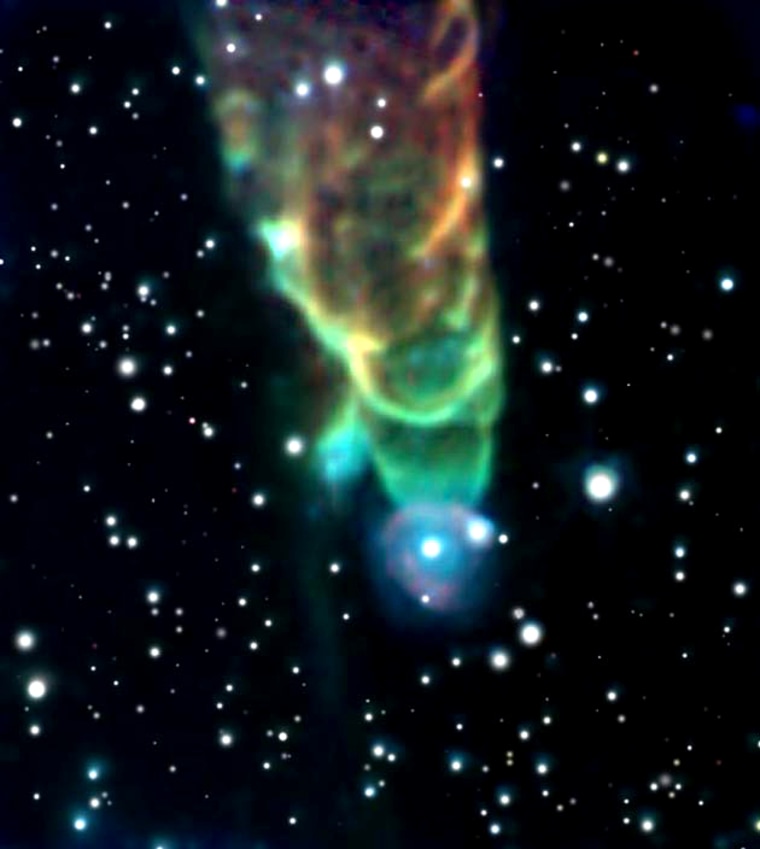High-energy particles spewing out of a young star in a nearby stellar nursery are plowing through interstellar clouds and creating a giant spiral structure in space that looks like a glowing, rainbow-colored tornado, scientists said Thursday.
The star spewing the particle jet lies 480 light-years away in a star-forming region known as Chamaeleon I.
In an infrared-wavelength photograph taken with NASA’s Spitzer Space Telescope, that star is actually not visible because it is located off the upper edge of the image.
The luminous tornado-shaped structure is known as a Herbig-Haro object and estimated to be about 0.3 light-years, or nearly 2 trillion miles (3.2 trillion kilometers) long.
Herbig-Haro objects are formed when highly energized particles — usually electrons and protons — are ejected from a young star and collide with nearby clouds of interstellar dust and gas. The jet particles stream out of the stars at speeds of more than 100 miles (160 kilometers) per second and heat the surrounding clouds to an infrared glow that can be detected.
Astronomers have known about Herbig-Haro objects for decades but have never observed one with this unique spiral structure; this particular particle jet is known as Herbig-Haro 49/50, or HH 49/50.
“I’ve never seen anything quite like this one,” said Giovanni Fazio, a physicist at the Harvard-Smithsonian Center for Astrophysics who was not involved in making the discovery.
“We were really quite stunned by it,” he told Space.com.
As particle jets move through the clouds, they create triangular shockwaves, similar to the wake left behind a speeding boat.
The reason the tornado appears multicolored is because particles at the tip of the jet are more excited than those nearer to the star from which they are emanating. The excited particles radiate short-wavelength emissions, which in this color-coded image appear blue; emissions from particles near the wide base of the jet are longer and appear red.
Scientists aren’t sure what is behind HH 49/50’s unique spiral shape. One hypothesis is that magnetic fields in the region are somehow twisting the particle jets; another idea is that the shock waves are creating eddies in the dust clouds which then glow and become visible.
Scientists also don’t know whether the star at the center of the image is associated with HH 49/50 or not.
If it is, then it could mean that the image actually shows HH objects from two stars colliding with each another. The more likely option, scientists say, is that the center star is actually located much farther away and only looks as if it’s associated with HH 49/50 because it happened to be in Spitzer’s line of sight when the image was taken.
The team that made the discovery was headed by John Bally of Colorado State University. The find was announced Thursday at the 207th meeting of the American Astronomical Society.
